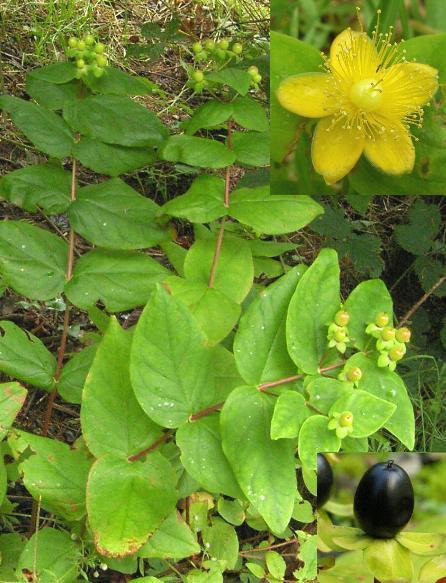TutsanScientific Name: Hypericum androsaemum |
A shrubby semi-deciduous perennial which is native to the British Isles. In the wild is found in open woods, hedgerows and in the crevices of limestone pavement. It is a prolific seeder and can become invasive in the garden where it can establish in the crevices of walls and paving. Now distributed world-wide, it is considered a problem weed in some areas where it is displacing native species.
The name comes from Norman-French, toute-saine which means 'all-heal'. In herbal medicine the leaves have been used to cover open wounds and have diuretic properties. The close relative, Common St. John's-wort (H. perforatum) is the species which us used as a medicinal herb for treating depression , an oily extract has antibiotic properties which make it useful for healing wounds and first-degree burns.
The leaves are broad ovals arranged in pairs on the reddish stems.
The yellow flowers occur from June to August in terminal clusters, followed by green fruits which turn red, then black as they ripen. The seed are either distributed by birds which eat the fruit or fall locally as the fruit dry and burst open.
It can be grown as ground-cover or to fill an awkward corner, but should be cut back to ground level before the berries turn black as they ripen. Do not allow it to establish on the tops of walls as it is difficult to remove and could damage the structure. Repeated removal of the topgrowth exhausts the roots or a weedkiller for treating tough weeds or scrub should work.
Follow these links for further details on Weeds, Weed Removal and Weed Prevention.

Seedling picture